Click on images to enlarge
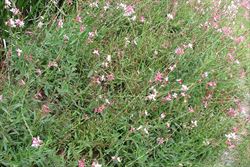
mass amenity planting (Photo: Sheldon Navie)
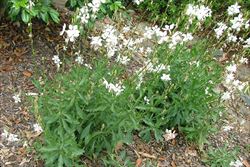
habit in flower (Photo: Sheldon Navie)
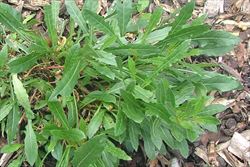
lower leaves (Photo: Sheldon Navie)
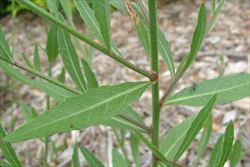
stems and upper leaves (Photo: Sheldon Navie)
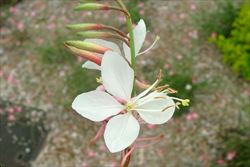
flowers and flower buds (Photo: Sheldon Navie)

pink flowers (Photo: Sheldon Navie)
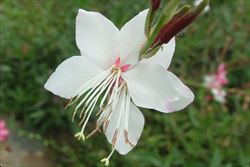
close-up of white flower (Photo: Sheldon Navie)
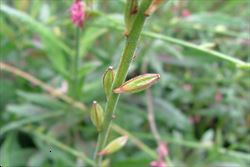
immature fruit (Photo: Sheldon Navie)
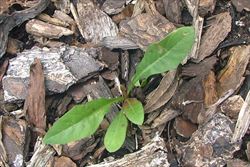
seedling (Photo: Sheldon Navie)
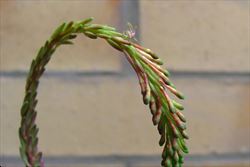
the more numerous and less conspicuous flowers of clockweed, Gaura parviflora (Photo: Sheldon Navie)
Scientific Name
Oenothera lindheimeri (Engelm. & A.Gray) W.L.Wagner & Hoch
Synonyms
Basionym: Gaura lindheimeri Engelm. & A. Gray
Family
Onagraceae
Common Names
butterfly bush, butterfly plant, clock weed, clockweed, gaura, pink butterfly bush, white butterfly bush
Origin
Native to North America (i.e. southern Louisiana and Texas in south-eastern USA).
Naturalised Distribution
Occasionally naturalised, but not yet common or widespread, in many parts of eastern and southern Australia. It has been recorded as naturalised in south-eastern Queensland, in the coastal and sub-coastal districts of central New South Wales, in south-eastern South Australia and in the coastal districts of south-western Western Australia. Possibly also naturalised in the ACT.
Notes
This relatively recent introduction to Australia has become a popular garden plant. However, it has quickly escaped from cultivation and is now regarded as an emerging or potential environmental weed in Western Australia, South Australia, New South Wales and the ACT.
Butterfly bush (Oenothera lindheimeri) was recently listed as a priority environmental weed in at least one Natural Resource Management region and was also recently declared as a noxious weed in New South Wales. At present it is mainly a weed of disturbed sites and roadsides close to where it has been cultivated, however it is also beginning to spread into more natural areas (e.g. sandy sites and riparian zones).

